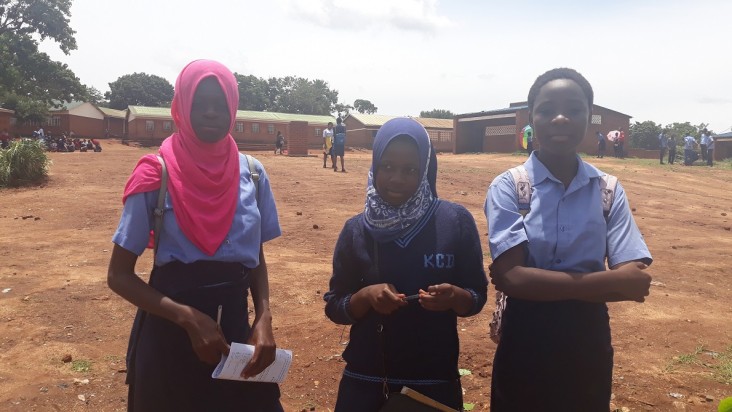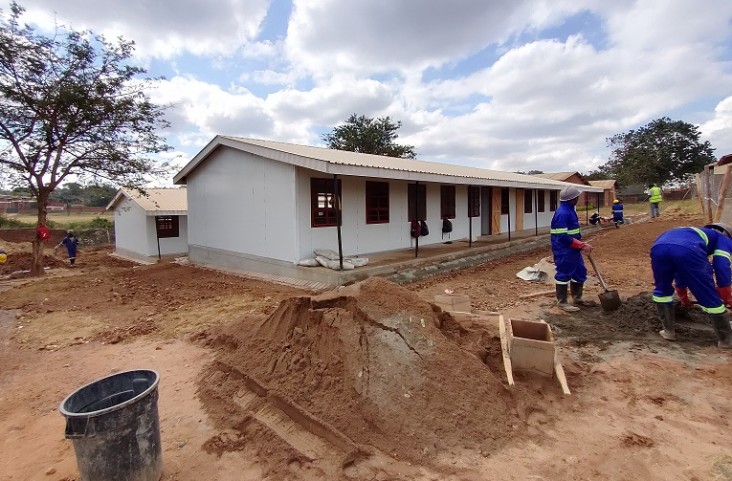Speeches Shim

Kawale Community Day Secondary School (CDSS) in Lilongwe, Malawi, educates up to 800 students each day and shares learning and sanitation facilities with 2,000 primary school students.
The primary school had originally been fitted with 24 toilet stalls to serve both primary and secondary school learners, but these toilet stalls lack doors and running water leaving filthy conditions and little room for privacy.
Hannah Mkwanda, a 15-year old student at Kawale and an aspiring nurse, was not amused with the sanitation facilities available at the school. It was too dirty to provide a good learning environment, especially for girls.
“The filth is the reason some of us in secondary school have sworn to never use these toilets,” said Hannah Mkwanda, a 15-year old student at Kawale and aspiring nurse. “And, they have no doors. How can a big girl like me use a toilet with no door alongside a standard 1 girl? It’s just too tough to be a girl at this school!”
The school’s head teacher, Anthony Banda said he was personally excited with the project, saying in addition to reducing congestion in the classrooms, the biggest game changer will be the provision of the Sanitary Changing Room for Girls, which the SEED activity has already begun constructing.
“Since the structure is elegant and of a higher standard, learners will be motivated to work while teachers’ morale will be boosted to work in a beautiful and conducive environment. Girls education will be promoted since more girls will be enrolled due to the increased space,” said Mr. Banda.
Mr. Banda, Hannah, and her fellow learners hope that once the school receives the new classroom blocks and toilets, school attendance, students’ performance and learning outcomes will all improve.
Every year, the lack of available secondary schools’ admission spaces in Malawi means that over 20,000 adolescent girls, and a similar number of boys (if not greater), graduating from primary schools are denied access to continuing their secondary school education. The lack of adequate secondary schools in Malawi affects sixty percent of Malawi’s population who are youth, and this troubling deficiency is even more dire in rural areas.

Most of those girls and boys that get admitted into secondary schools travel long distances to the nearest secondary schools. Such long distances to secondary schools discourage both boys and girls from attending secondary schools. However, this issue affects girls disproportionately as the farther a girl must travel, the greater concern is for her safety.
Parents may also be reluctant to allow their daughters to travel long distances, or the girl herself might think school is not worth additional risk. Travelling long distances to secondary schools exposes girls to gender-based violence and increases their risks to contract HIV, getting early pregnancies while some eventually drop out of school and end up in early marriages.
By increasing the number of schools in rural areas, the distances students travel to and from school will be drastically reduced. In addition, improved school facility design including separate boys and girls latrines, and girls latrines with changing areas to support menstrual hygiene, will increase attendance rates.
In a whole-of-USG partnership effort, USAID, President's Emergency Plan For AIDS Relief (PEPFAR), Centres for Disease Control and Prevention (CDC) and Peace Corps are working together to support the MoEST in improving secondary school access for Malawi’s youth.
The SEED project has two phases (urban and rural) according to where the schools are being constructed.
SEED Urban: This involves constructing of prefabricated classroom blocks and latrines to approximately 30 urban CDSSs in Blantyre, Zomba, Lilongwe, and Mzuzu, adding 5,760 new seats to the 30 existing urban CDSSs.
SEED Rural: This involves expanding secondary education in rural areas, SEED will design and construct up to 200 new CDSSs over the next four years. The new schools will be located near existing primary schools providing a new opportunity for many of Malawi’s youth where historically there has been limited access to secondary education.
New school infrastructure and improvements to education access will provide many young boys and girls the opportunity to stay in school and obtain an education that will open doors for their future. An expanded educated population will further strengthen Malawi’s growth and advance country progress.

Comment
Make a general inquiry or suggest an improvement.